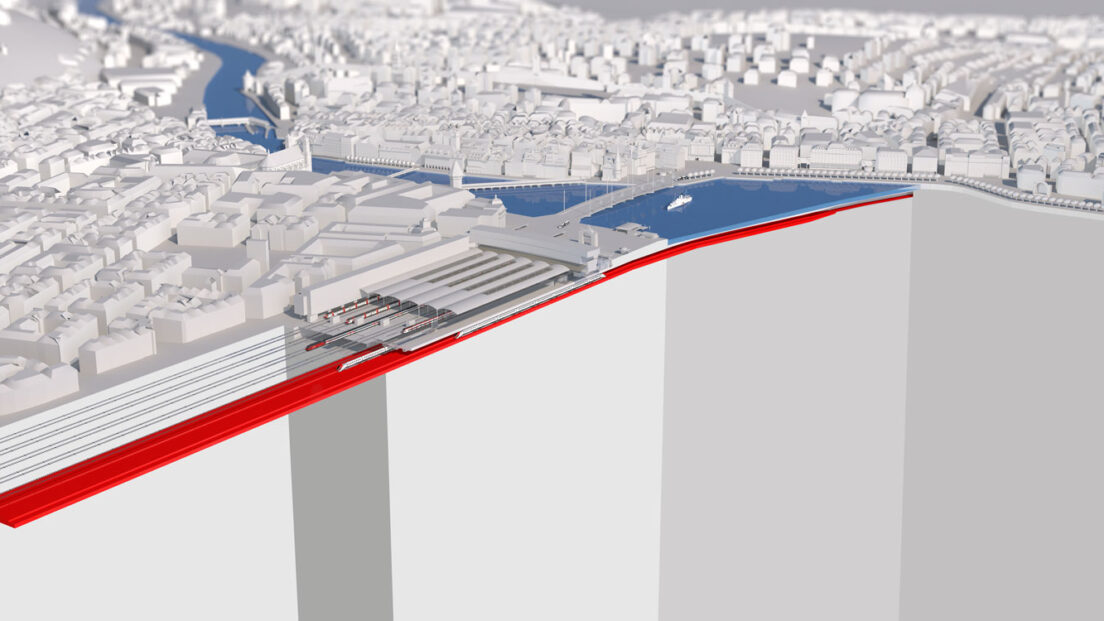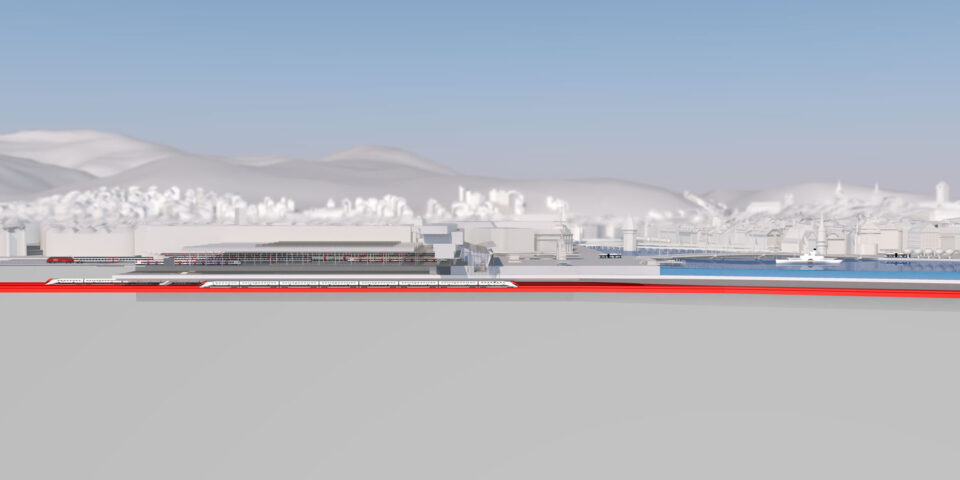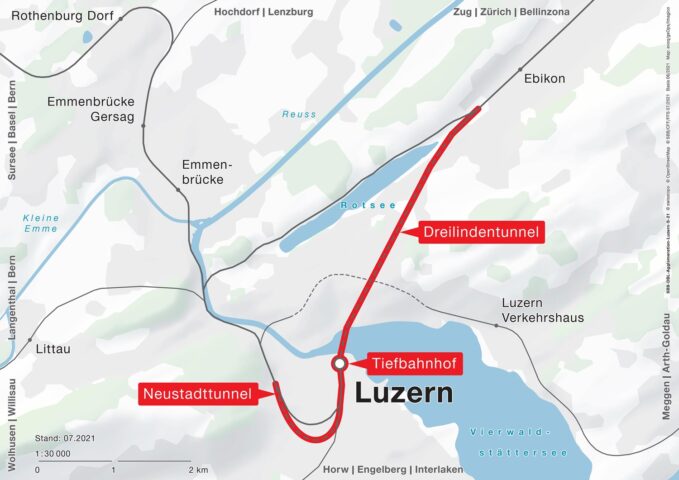New through station Lucerne

Lucerne will receive a through station in 2040 at the earliest, which will enable shorter travel and transfer times as well as more frequent timetables. In addition, the entire canton will benefit from an expansion of public transport.
Lucerne station is the sixth-largest railway station in Switzerland: around 100,000 passengers board and disembark here every day. The problem: the double-track access has reached its capacity limit and is prone to disruptions. The forecast growth in public transport mobility in the canton of Lucerne is around 40 percent by 2030. Rail mobility has already increased by 50 to 100 percent in the last ten years – especially on the canton’s main development axes.
The Federal Office of Transport, the Swiss Federal Railways (SBB), the cantons of Lucerne, Nidwalden and Obwalden, the city of Lucerne, the regional development agency LuzernPlus, the Lucerne Transport Association and the Zentralbahn (Central Railway) therefore want to expand rail services with the Lucerne through station (DBL) and implement various infrastructure projects. The planned through station is considered a generation project in Central Switzerland.

An underground through line with four lowered tracks is planned under the existing terminus station. This will be supplemented by a 3.5-kilometre-long underground double-track access and exit from Ebikon (three-lane tunnel) and a likewise underground double-track access and exit to the Heimbach area (Neustadt tunnel). The existing above-ground parking facilities at Lucerne station will be partly relocated, as they will then no longer be directly connected to the underground through station.
The DBL creates the conditions for faster connections in the region’s S-Bahn system as well as a faster north-south connection via Lucerne. This not only sets the course for more mobility, but also for achieving the climate goals in terms of sustainable mobility development. After all, the greatest potential for switching to public transport lies in the agglomerations and in connections between regional centres.

But the DBL will also optimise economic and urban development opportunities: The population will become more mobile, and in the centre of the city of Lucerne new space for urban development will be created thanks to the release of above-ground track infrastructure. The popular tourist cantons of Obwalden and Nidwalden will also benefit from better access.
The Zurich-Zug-Lucerne-Sursee-Olten axis in particular will benefit from the improved services. The Lucerne-Zug-Zurich line is the busiest railway line in the Lucerne region. With the addition of six long-distance trains from Lucerne to Zurich, the DBL will increase the timetable, enable a basic 30-minute interval for long-distance services and a quarter-hourly interval for regional services.
The DBL offers the possibility of managing the travel time between Lucerne and Milan envisaged in the NRLA concept and brings Ticino closer to German-speaking Switzerland: 20 minutes of travel time can be saved thanks to the DBL. The north-south connection via Lucerne will thus be faster than the one via Zurich, which passes through the busy Zurich main station.
The federal parliament approved the 2035 expansion step for the railway infrastructure in 2019. SBB is currently working on the preliminary project, which is expected to be completed in the first months of 2023. This will be followed by the examination of the results of a study on the implementation sequence, which should take about another six months. in 2027, the federal parliament will decide whether the DBL can be realised after 2030. If everything goes smoothly, the through station could be opened in 2040 at the earliest after a construction period of about ten years.
The costs will be available when the preliminary project is completed. The project will be financed through the Railway Infrastructure Fund (BIF). The client for the DBL project is the Federal Office of Transport (FOT). SBB is responsible for planning and implementation. The railway infrastructure will be expanded step by step – the expansion steps are determined every four years by the National Council and the Council of States.